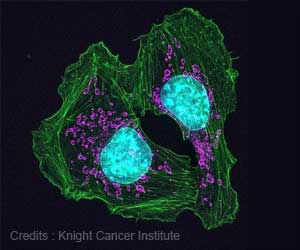A step toward effective treatment for XP and personalized healthcare approaches to identify individuals at higher risk of developing neurodegeneration.

Xeroderma Pigmentosum
Go to source).
TOP INSIGHT
Early detection algorithm for neurodegeneration in xeroderma pigmentosum patients is a promising step forward #Neurodegeneration #XerodermaPigmetosum
Recent research has identified potential drug targets that could help slow down or halt the onset of neurodegeneration. The availability of a national XP clinic in the UK facilitated this study by providing access to a large group of patients. Contrary to common beliefs, XP patients can live long lives if they receive proper photoprotection and early detection of skin cancers.
The findings from XP research may also shed light on the causes of neurodegeneration in otherwise healthy individuals as they age. Further validation studies and clinical trials are needed before the early detection algorithm can be used in clinical practice. The research represents Dr. Sophie Momen, a consultant dermatologist at Guy’s and St Thomas’ NHS Foundation Trust, London, UK, and a researcher in Professor Serena Nik-Zainal’s lab at the University of Cambridge, will tell the annual conference of the European Society of Human Genetics of her team’s work in the development of an early detection algorithm to predict which patients may develop such neurodegeneration.
Until now there has been little research in this area, partly because XP is a rare condition, affecting one person in a million, and because the brain, being an inaccessible organ in live patients, is very difficult to perform research on.
Neurons and Neurodegeneration in Xeroderma Pigmentosum
The researchers took blood samples from patients with XP with and without neurodegeneration, and from family members without XP, and turned these samples into pluripotent stem cells (cells that can be groomed into different cell types).The researchers were then able to identify the stem cells that would become brain cells (neurons). “We carried out various experiments on these neurons using multi-omic1 technologies to try to understand why some XP patients developed neurodegeneration and some did not. From this, we were able to develop our algorithm. This will be useful if we can offer something to patients to try to slow down or halt the onset of neurodegeneration. Our research has revealed possible drug targets, which may do just that in the future,” says Dr. Momen.
“Having such a clinic means that patients with rare diseases can be followed up long-term in one place, and this facilitates investigations such as ours,” Dr. Momen says. “This is the first time that so many patients with XP have been studied and their neurons have been characterized in such depth.”
“None of our patients has died from skin cancer,” says Dr. Momen. “It is often said that patients with XP die in their 20s and 30s, either due to skin cancers or neurodegeneration, but this is not always the case. It is important to recognize that there are some patients with XP who do not develop neurodegeneration and mainly develop skin cancers, against which they can take protective measures at an early stage.”
Unveiling Clues to Neurodegeneration, One Cell at a Time
The results may also be useful in understanding why otherwise healthy people develop neurodegeneration as they age. Over the past few years, the study of patients with XP has helped scientists to understand why some otherwise healthy people develop skin cancers after exposure to UV light. “We can now extrapolate the findings in our study to the understanding of why the faulty DNA repair pathway involved in XP is involved in brain health and this may, in turn, help us understand why some people develop neurodegeneration as they age.”Further validation studies of the early detection algorithm will be necessary before it can be used as a predictive tool in clinical practice. Clinical trials will also be needed to see which, if any, medications may be useful in halting or delaying neurodegeneration in patients identified as being at risk.
“I did not expect that we would be able to characterize the neurons derived from those patients with and without neurodegeneration so clearly. When we used proteomics, the results allowed us to see clearly whether patients had neurodegeneration or not,” says Dr. Momen. “This is very encouraging and, we hope, a further step along the road to effective treatment of this distressing condition.”
Professor Alexandre Reymond, chair of the conference, said: “Our ability to personalize treatments will translate into a more effective health system. To reach this goal, we need new approaches to recognize those in the population who are more at risk.”
Reference:
- Xeroderma Pigmentosum - (https://www.ncbi.nlm.nih.gov/books/NBK551563/)
Source-Eurekalert
 MEDINDIA
MEDINDIA




 Email
Email




